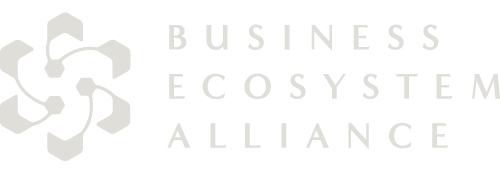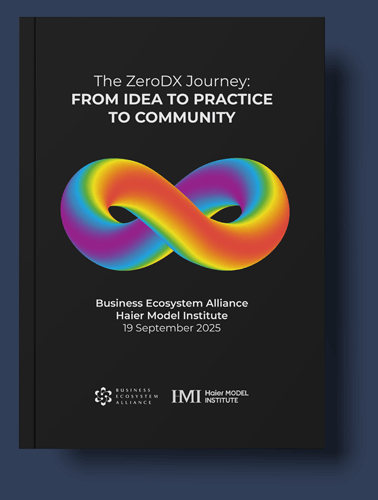The first step in improving an ecosystem
Dan Toma
In 1878 Leo Tolstoy released what would become one of his most acclaimed works, the novel Anna Karenina. The book starts with a quote, that over the centuries will transcend disciplines: “Happy families are all alike; every unhappy family is unhappy in its own way.”
Taken literally the quote is a good reflection on family life and family conduct. But as a metaphor the quote found applications in different fields, from anthropology to ecology and from philosophy to, now, business.
The quote became the Anna Karenina Principle with its popularization by Jared Diamond in Guns, Germs and Steel. In the book the principle is used to illustrate why – throughout human history – so few wild animals have been successfully domesticated. A deficiency in any one of a great number of factors can render a species undomesticable. Therefore, all successfully domesticated species are not so because of a particular positive trait, but because of a lack of any number of possible negative traits. Therefore, the Anna Karenina Principle can be summed up as: a deficiency in any one of a number of factors dooms an endeavour to failure – consequently, a successful endeavour (subject to this principle) is one where every possible deficiency has been avoided or overcome.
With more and more businesses understanding the importance of building innovation ecosystems in order to ensure sustainable future growth, the Anna Karenina Principle comes to the forefront again when it comes to improving or changing these ecosystems.
An innovation ecosystem consists of many elements, and these need to work in sync for growth to happen. By clustering the many ecosystem elements we end up with five pillars: strategy, leadership, process, culture, and management. Understanding what is hindering the progress and outcome of the ecosystem becomes paramount when it comes to deploying improvements or making changes. Think of the ecosystem improvement strategy in terms of a satnav system in a car. Satnav systems are great when they work but there are times when the link is down, the signal fails, or the reading is off and the journey can turn into a random game of mystery road pinball. Or to put it another way, you know where you want to get to but unless your starting point is clear then any proposed route and any stops along the way are simply guesswork or, in innovation parlance, unproven assumptions!
The same applies when it comes to innovation improving an ecosystem. Unless you are clear on your current starting point then your roadmap to developing the ecosystem’s maturity within an organization will at best be packed with assumptions and, at worst, will actively prevent further development.
To illustrate this point imagine an ecosystem where individual entrepreneurs are too afraid to propose a new idea for fear of being punished by senior leaders. Then there is a direct limit to the number of ideas submitted, which will in turn impact the company’s growth in the years to come. This is a clear cultural blocker that needs to be addressed before any further investments are made. If this blocker is not flagged early on, any investment in capability development, for example, will be money poured down the drain. Or another example: if the C-level can’t agree on a clear strategy, the investments will be done randomly – again, this strategy blocker will have dire implications for the company’s future. Therefore creating, for example, a Corporate Venture Capital fund before a clear innovation strategy is defined will not be a good idea because investments will not be a deliberate act.
Another important aspect to understand when it comes to improving an ecosystem is that just doubling down on something that’s already working will not result in an increase of the outcomes – the contrary might actually happen. Hence all elements of the ecosystem need to be not just in sync, but also equally mature. For example, simply increasing the R&D budget won’t pay off if another factor holds this variable back. “There is no statistically significant relationship between how much a company spends on its innovation efforts and its sustained financial performance,” states a Price Waterhouse Cooper research paper. Testament to which is the discrepancy that can be clearly seen when the Boston Consulting Group’s Top 50 Most Innovative Companies in the World is put next to the Statista’s Top 20 R&D Spenders in the World – only three of the top ten spenders are top ten innovators.
To understand the maturity of each element making up an ecosystem, one first needs to understand the difference between attributes and outputs. For analogy: should a person be considered mature because they brush their teeth and look smart at work, or because they are emotionally well-developed and bring thoughtful and reasoned arguments to the benefit of the organization, its people, and customers? Outward appearances don’t always reveal what is going on inside, so measuring “things” rather than attributes won’t help you to unpack and define what is truly going on. When you take away the “things” then what you are left with is a complex interaction between the five pillars of the ecosystem. Drawing those strands together produces an innovation maturity dashboard that, used correctly, informs and guides an aligned roadmap of required interventions and hence, the progress of the organization.
The maturity of an ecosystem can be divided into many levels but from experience we’ve seen that four levels work best. With that in mind let’s take a look at the innovation novice, the first level. Now just because an organization is at the novice end of the spectrum, it doesn’t mean that there is no innovation activity. On the contrary, there might be little spurts of ad hoc activity in one or more departments and innovation may even be occasionally discussed amongst the leadership team. But discussion is as far as the leadership gets and with no leadership sponsorship and no innovation strategy, any positive outcomes are likely to be accidental rather than designed.
Attaining innovation competency not only requires cultural change, but also a sea change in the leadership approach. At the second level, leaders now recognize the need for innovation as a driver of outcomes. To this end they have developed a basic innovation strategy and are prepared to sponsor innovation, albeit at a limited level. Some innovation training may have taken place and the organization may have looked to incorporate basic innovation tools into the mix. However, by and large the focus is still on short-term outcomes and there is a fair chance that the innovation strategy is not aligned with that of the organization.
That’s certainly not the case for innovation experts. Attaining this new level of maturity – the third level – sees a cultural and leadership shift from seeing innovation as an add-on to recognising it as an intrinsic driver across the organization. There is still some way to go but at least innovation is now aligned to the core strategy, with visible leadership sponsorship of innovation activity.
At this level innovation ideas are starting to spread across the organization, becoming embedded in product and process design as well as influencing and informing the way in which teams and projects are managed.
Admittedly the focus is still on mid-term goals; but on the positive side a suite of innovation tools alongside defined metrics and KPIs is starting to enable activity across the innovation mix.
Innovation leadership is when preparation ends and the full innovation journey begins – the fourth level.
Innovation is no longer just aligned to the strategy. Rather it is an intrinsic part of the strategy and is fully integrated into the culture. There are fully integrated metrics and KPIs delivering a realistic and rounded picture of organizational capability, thereby enabling product and process development to be focused on delivering innovative outcomes.
There is also full leadership sponsorship alongside the development of a core innovation team. Together these help to transform business management, building innovation engagement and enabling people to innovate without fear of failure. This in turn moves the organization’s viewpoint away from short-termism and towards the attainment of long-term goals.
The best way to gauge an ecosystem’s maturity and its needs is to use a company-wide survey asking multiple- choice questions about every sub-element of each of the five pillars. The survey will have to be distributed both vertically and horizontally in the organization. For example, questions around the ecosystem’s leadership can be something along the lines of:
- Our leadership team provides the right support and resources to deliver on our company’s innovation goals and ambitions
- Our leadership team is consistent in putting words into action around innovation
- There is a clear and visible leadership ownership and sponsorship for innovation
Note that in order to get a statistically accurate (within an agreed margin) high-resolution picture of what the ecosystem needs, the survey doesn’t need to be taken by everyone in the company. As long as it gets to a cross section of people both horizontally and vertically there is no need to get it to more than 10 percent of the ecosystem.
For increased accuracy you can combine the survey data with an analysis of the ecosystem’s outcomes. If the shortcomings in the outcomes can be explained by the findings from the survey, the ecosystem’s needs are now clear.
In a nutshell, if one wants to improve an existing ecosystem a perpetual improvement process is made up of the following five steps:
- Assess the current state of the ecosystem using both the survey method and analysis of its outcomes.
- Understand the limiting factors or blockers of the ecosystem – the things that hinder the ecosystem’s maturation and its outcomes.
- Tackle the blockers with fitting actions (e.g., leadership development programmes, process improvement initiatives, cultural transformations, etc.)
- Measure again the ecosystem once the actions have been deployed to make sure they had the expected impact.
- Redo the loop every time the ecosystem needs improvement.
Successful innovation requires more than just process transformation, it calls for the entire ecosystem to have an innovative ethos and be equipped to tackle the challenges of tomorrow. This includes the need to have an appropriate HR strategy, an appropriate structure, demonstrable executive level support, and a culture built around innovation. Action to improve an ecosystem should be taken after the current situation is fully understood. A full analysis of the ecosystem needs to have the full support of the executive suit if it is to uncover ecosystem blockers that prevent the company from achieving its growth goals.
Making sure your family is a happy one is not so much a matter of luck or will, as it is a matter of understanding the particular needs of your family. Assessing your ecosystem should be the first step before any improvement measures are taken as they need to speak to your ecosystem and your ecosystem alone.
Dan Toma helps large companies such as Deutsche Telekom, Bosch, Jaguar Land Rover, Bayer, John Deere, and Allianz to master lean start-up techniques. A proponent of the ecosystem approach to innovation, he also works with government bodies to develop national innovation ecosystems, including the Finnish Ministry of Foreign Affairs in Vietnam. He is coauthor of The Corporate Startup (Vakmedien, 2017) and a member of the Thinkers50 Radar community of 2020.


